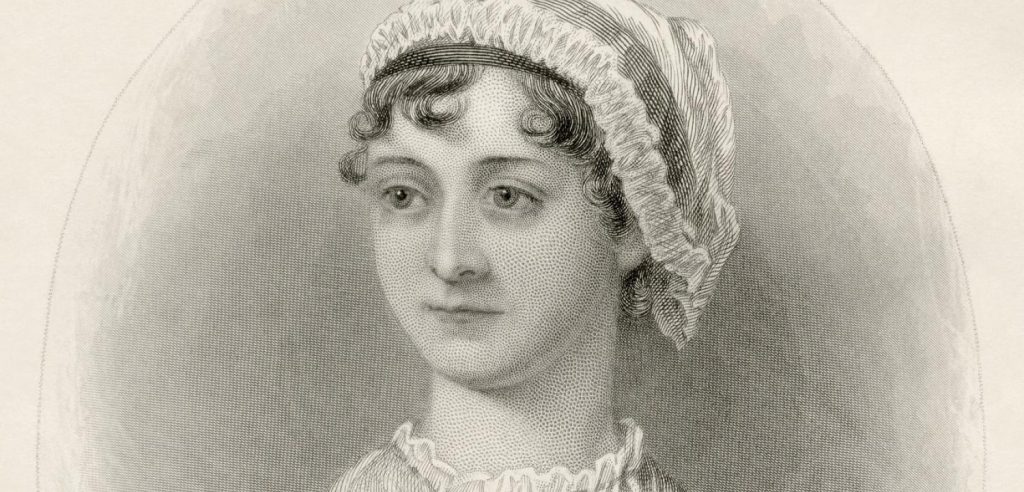From ancient epics to modern novels, the role of the narrator has evolved alongside the art of storytelling. Discover the epic journey of this unsung hero and how Jane Austen changed the game.
Gather round, gather round. Sit yourself at the fire. That’s right. Close in tight. Huddle up. Get warm. Grab a mug of something warm, I’m going to tell you an epic tale about narrators.
Ah yes, the unsung heroes of storytelling.
Now narrators, like ice cream, come in many flavours. You may have heard of the “unreliable” type and the “alternating” variety and those who favour “streams of consciousness” and those who discipline themselves with particular “point of view” characters.
But we’re going to make it easy in this blog.
We’re picking two.
First person or omniscient. (Some stickler will point out where I went wrong.)
But anyway, broadly, either a character in the story telling the story, or someone watching from afar, a God-like figure who can swoop into lives and minds.
A brief history of the narrator
The literary history of the narrator is a complex and evolving one that has been shaped by a variety of cultural, social, and artistic factors.
In ancient times, storytelling was often an oral tradition, with tales passed down from generation to generation. The narrator told stories of gods and monsters. The role of the narrator was essential, as they were the ones who conveyed the story and its meaning to the audience. But they couldn’t participate in the story because they were neither god or monster.
- 5 ways to master writing discipline if you’re chronically short of time
- Master the art of storytelling with these 5 simple Cs
With the rise of written literature, the role of the narrator began to change. In early works of literature, the narrator was often an omniscient figure who spoke with authority and impartiality, providing the reader with a sense of the objective truth of the story.
Think of Charles Dickens inserting himself into his stories to tell you directly what he felt and, by implication, what you should feel too. By modern standards, it was unashamed editorialising. But he was Charles Dickens. He could do what he wanted.
However, as literature became more self-conscious and self-reflexive, the role of the narrator began to shift.
The paradoxical nature of the uninvolved narrator
In the modern era, the narrator has become a more complex and contested figure, with writers experimenting with a variety of narrative techniques and points of view.
Some writers have embraced a more subjective and fragmented approach to narration, using multiple narrators or “free indirect style” to create a more intimate and nuanced portrayal of their characters’ inner lives.
In recent years, there has been a growing interest in the role of the narrator in shaping the reader’s experience of the text.
Yes, the narrator can never entirely be distinct. He/she is a character in the story whether they want to be or not.
Some writers and critics argue that the narrator’s voice is a crucial aspect of the literary work, influencing the reader’s understanding of the story and its meaning. Others contend that the role of the narrator should be minimized, allowing the reader to engage more directly with the characters and the story itself.
But let’s just go back to basic. The first person. A character in the story tells the story from their point of view.
Three novels written in the first person
- The Catcher in the Rye by JD Salinger: This iconic novel is narrated by Holden Caulfield, a disaffected teenager who is struggling to find his place in the world. Salinger’s use of first-person narration allows the reader to get inside Holden’s head and experience his alienation and angst first-hand.
- The Bell Jar by Sylvia Plath: This autobiographical novel is narrated by Esther Greenwood, a young woman who struggles with depression and alienation in the stifling social climate of the 1950s. Plath’s use of first-person narration allows the reader to experience the intensity of Esther’s emotional turmoil.
- The Color Purple by Alice Walker: This Pulitzer Prize-winning novel is narrated by Celie, a young African-American woman living in the rural South in the early 20th century. Through Celie’s letters to God and her sister, Nettie, the reader witnesses the brutality of racism and sexism, as well as Celie’s growing sense of self-worth and empowerment.
And in contrast three books written by an omniscient narrator
Three novels written in by an omniscient narrator
- The Picture of Dorian Gray by Oscar Wilde: The novel is narrated by an omniscient narrator who describes the life of the beautiful and wealthy Dorian Gray, as he descends into a life of debauchery and sin. The narrator’s observations on the corruption of society and the human psyche are biting and insightful.
- Pride and Prejudice by Jane Austen: The novel is narrated by an omniscient narrator who describes the lives and loves of the Bennet sisters and their social circle. The narrator’s wry observations on the mores and customs of English society in the early 19th century provide a humorous and incisive commentary on human nature.
- Wuthering Heights by Emily Bronte: The novel is narrated by an omniscient narrator who describes the intense and passionate relationship between Heathcliff and Catherine, as well as the turbulent lives of the people around them. The narrator’s vivid descriptions of the moors and the wild landscape add to the haunting and atmospheric tone of the novel.
5 advantages of omniscient narrators
Omniscience conveys some particular advantages.
- Greater control over the story: An omniscient narrator allows the writer to have complete control over the story and how it is presented to the reader. The narrator can reveal any information they choose, from the thoughts and feelings of multiple characters to events that take place outside of the main action.
- Ability to provide context and insight: An omniscient narrator can provide valuable context and insight into the story, including historical or cultural background, explanations of character motivations, and foreshadowing of events to come. All without trying to give exposition to the characters to do, which always sounds false.
- Flexibility in point of view: An omniscient narrator can switch between different characters and points of view, allowing the writer to explore multiple perspectives on the same events. This can help to create a more complex and nuanced portrayal of the story world and the characters who inhabit it.
- Increased scope: An omniscient narrator can cover a much wider scope of time, space, and action than a limited or first-person narrator. This can be especially useful for epic or sprawling stories that cover multiple generations, locations, or historical events.
- Potentially more objective: An omniscient narrator can present a more objective and balanced view of the story and its characters, since they are not limited by the biases or subjective experiences of a single character.
The disadvantage being that the narrator sees all – but do they feel all? Can they possibly know the minds and psychology of the characters at their disposal.
The big breakthrough in melding the two came with the peerless Jane Austen who devised what became known as “free indirect style”. The best of both worlds approach.
What is ‘free indirect style’?
Free indirect style is a narrative technique used in literature where the narrator’s voice is blended with a character’s point of view. It allows the writer to convey a character’s thoughts, feelings, and perceptions through indirect means, without explicitly stating them in the text.

Jane Austen
Instead, the narrator’s voice adopts the tone, vocabulary, and syntax of the character, creating a more intimate and immersive reading experience.
The narrator describes the actions and thoughts of the characters, but also slips into their perspective, as if the character’s voice is being channelled through the narrator.
3 writers who are masters at free indirect style
We’ve mentioned Charles Dickens and Jane Austen. So here are five writers who are excellent at free indirect style:
- Elmore Leonard: Leonard is known for his spare, minimalist prose and his use of free indirect style to create a sense of realism and immediacy in his crime fiction. His narrators often adopt the voices and perspectives of his characters, creating a gritty and authentic portrayal of the criminal underworld and the people who inhabit it.
- Martin Amis: Amis often uses free indirect style to create a sense of psychological depth and complexity in his characters. His narrators are able to blend the voices of his characters with their own ironic and self-conscious commentary, creating a multi-layered portrait of their inner lives. Amis’s use of free indirect style is particularly effective in his satirical novels, where it allows him to explore the absurdities and contradictions of contemporary life with a sharp and incisive wit.
- Zadie Smith: Smith is known for her ability to inhabit the minds of her characters and capture their unique perspectives through her use of free indirect style. Her novels, such as White Teeth and On Beauty, feature a diverse cast of characters from different backgrounds and cultures. Her use of free indirect style allows the reader to experience their worlds and experiences in a nuanced and empathetic way.
The problem with narrators
One problem with narrators is they can fall in love with the sound of their own voice. So I’ll shut up now but leave you with this rare typology. Check out this opening sentence.
“You are not the kind of guy who would be at a place like this at this time of the morning. But here you are, and you cannot say that the terrain is entirely unfamiliar, although the details are fuzzy.”
The second-person narrative.
This one comes from Bright Lights, Big City by Jay McInerney: This novel is narrated in the second person, immersing the reader in the mind of an unnamed narrator who is navigating the nightlife and excess of New York City in the 1980s.
The use of second-person narration creates a sense of immediacy and intimacy, making the reader feel as though they are experiencing the story first hand.

